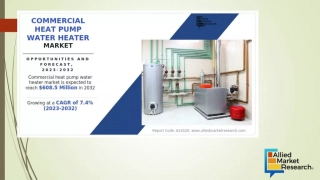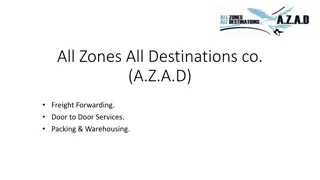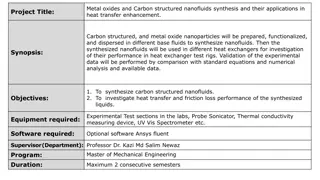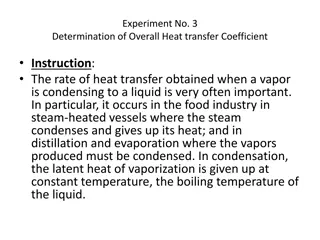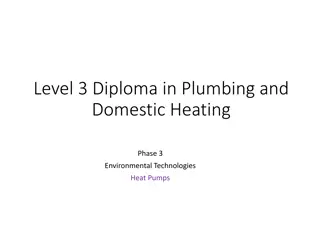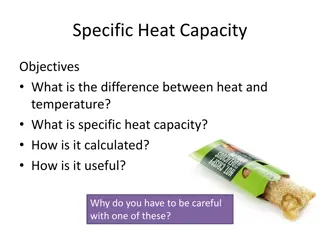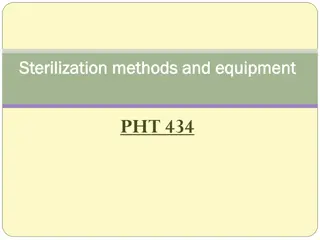Door Heat Exchanger Specifications and Applications by John Fernandes
Discover the detailed specifications and potential applications of the Door Heat Exchanger designed by John Fernandes. Explore physical specifications, hinged solutions for ease of access, weight limitations, facility interfaces, and requirements for facility air and coolant. Get insights into the equipment's operation, supported coolant types, and more for efficient performance.
Download Presentation

Please find below an Image/Link to download the presentation.
The content on the website is provided AS IS for your information and personal use only. It may not be sold, licensed, or shared on other websites without obtaining consent from the author. Download presentation by click this link. If you encounter any issues during the download, it is possible that the publisher has removed the file from their server.
E N D
Presentation Transcript
Door Heat Exchanger: Specification John Fernandes Facebook
Potential applications: Naming convention Potential applications: Naming convention Traditional (air-to-liquid) Hybrid (air-to-liquid & liquid-to-liquid) Air-assisted (liquid-to-air)
Physical specifications Physical specifications
Physical specifications Physical specifications Hinged solution for ease-of-access: Fans, power-bus bar, manifolds, etc. Weight limitations Assembled and primed rack: 3086lbs (1400kg) Door HX only: 220lbs (100kg) preferred; 330lbs (150kg) maximum Minimum aisle width of 4ft (1220mm) Permit opening of door by at least 90 without interfering with adjacent racks
Physical specifications Physical specifications
Physical interfaces Physical interfaces Facility coolant Connections should be permitted from both top and/or bottom sides Accommodate different interface types for flexibility on-site; QC-type? Electrical (active variant) Supply options: 110 or 230VAC (50/60Hz) AC plug-in connector: C14 or C20 DC supply from open rack power-bus bar (11 to 54VDC)? Fuse specification? Preferred location? Communication Port type and protocol? Preferred location?
Facility air Facility air- -side conditions side conditions Cold-aisle Temperature 18 C ~ 35 C (65 F ~ 85 F) Temperature Ramp Rate 5 C/15min Cold-aisle Pressurization 0.005 H2O (1.24Pa) 10% ~ 90% Relative Humidity Altitude 2000m (6600ft) Temperature Difference * 12.2 C (22 F) * or dependent on IT gear being supported; 12.2 C may serve as a reference value to define performance metrics under 100% neutralization of heat load
Facility coolant requirements Facility coolant requirements Operating pressure: Typical range? worst-case? Supply temperature: 12 C (non-condensing); typical range? Coolant DT across door: Typical range? Target for efficient operation? Supported coolant types: Water, water + glycol, dielectric Pressure drop requirements?
Performance / Metrology Performance / Metrology Cooling or heat rejection capacity should be defined in kilowatts (kW) Based on: Air and coolant flow rates, inlet temperatures to HX and operation at sea- level Performance curves (or tables) should be provided for both normal and fan failure operation Active variant N+1 rotor/fan redundancy is a must Total power consumption should be 2% of rated cooling capacity (not including fan failure) De-rating factors for cooling capacity based on coolant selection (with respect to water) and altitude (with respect to sea-level) Air- and coolant-side pressure drop curves should be provided
Monitoring & Control Monitoring & Control Which of the following could be classified as required, recommended or optional? Monitoring Door inlet and outlet temperatures, differential pressures (air and coolant) Fan duty cycle or speeds Modulating coolant control valve (position), coolant flow rate Absorbed power, total power consumption Alarms Fan high/low speed, fan failure Sensor failure, communication failure Leak detection Control Air outlet temperature, water outlet temperature Differential water temperature, differential air temperature Reporting should employ the REDFISH standard
Serviceability Serviceability Ease of replacing Door HX Draining, un-mounting, installation and priming Access to physical interfaces (coolant connections, power supply and communication cables) Containment and discharge of expelled coolant in the event of a leak? Discharge from condensation pan at the bottom of Door HX assembly? Ease of replacing fan modules Ease of replacing sensors or other accessible parts
Quality & Testing Quality & Testing Testing of HX after assembly Pressure rating: Reference condition, factor-of-safety? Leak testing Checking physical interfaces? Quality Soldered joints only? Sealing on adapter frame and/or HX to prevent leakage of server exhaust or entrainment of facility air? Any other requirements that should be standard?
Regulations, Compliance, etc. Regulations, Compliance, etc. Regulations/compliance What are standard requirements? Labels and markings? Vibration & shock


